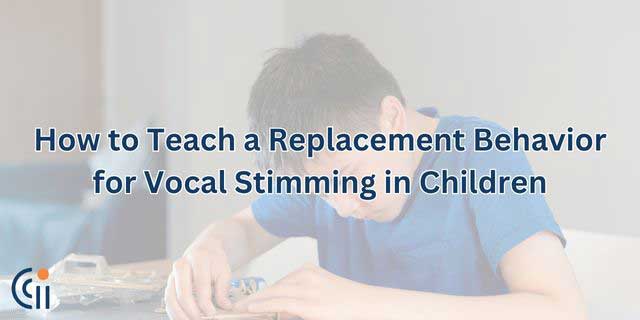Children with autism often experience sensory processing issues, which can manifest as either sensory-seeking or sensory-avoiding behaviors. Understanding these behaviors is crucial for parents, caregivers, and educators to provide the best support. At Circle City ABA, we aim to empower families with knowledge and strategies to help their children navigate these sensory challenges.
Understanding Sensory Processing Issues
Sensory processing issues occur when the brain has difficulty receiving and responding to information from the senses. For children with autism, these issues can be more pronounced and can significantly impact their daily lives. Sensory processing issues can be categorized into two main types: sensory seeking and sensory avoiding.
Autistic Sensory Seeking
Sensory seeking refers to behaviors where children actively seek out sensory input. These children may constantly be in motion, touch everything, make loud noises, or have a high tolerance for pain. They are driven by a need to feel more sensory input than others to feel regulated and comfortable.
Common Sensory Seeking Behaviors:
- Spinning or twirling
- Jumping or bouncing
- Touching people and objects
- Making loud sounds or talking loudly
- Enjoying strong tastes or smells
Helping Children Who Are Sensory Seeking
To support sensory seeking children, it’s important to provide them with safe and appropriate ways to get the sensory input they crave. Here are some strategies:
- Create Sensory Breaks: Schedule regular intervals for sensory breaks during the day. During these breaks, children can engage in activities like jumping on a trampoline, swinging, or using a sensory bin.
- Use Sensory Toys: Provide toys that offer different textures, lights, and sounds. Items like fidget spinners, chewable jewelry, and textured balls can be very helpful.
- Incorporate Sensory Activities: Activities like playing with play dough, finger painting, or sensory bins filled with rice or beans can help meet their sensory needs.
- Physical Activities: Encourage activities that involve heavy work, such as pushing, pulling, or carrying objects, which can help provide the deep pressure input they seek.
Understanding Sensory Avoiding
Sensory avoiding refers to behaviors where children are overwhelmed by sensory input and try to avoid it. These children may cover their ears at loud noises, be picky about textures in food or clothing, or become distressed in crowded or brightly lit environments.
Common Sensory Avoiding Behaviors:
- Covering ears or eyes
- Avoiding certain textures or fabrics
- Having a strong reaction to smells or tastes
- Becoming anxious or upset in noisy or crowded places
Helping Children Who Are Sensory Avoiding
Supporting sensory avoiding children involves creating a calm and predictable environment and helping them gradually tolerate different sensory inputs. Here are some strategies:
- Modify the Environment: Reduce sensory overload by minimizing background noise, using soft lighting, and creating a quiet, calming space where the child can retreat when overwhelmed.
- Gradual Exposure: Gradually introduce new sensory experiences in a controlled and predictable manner, allowing the child to build tolerance at their own pace.
- Use Sensory Tools: Tools like noise-canceling headphones, weighted blankets, and sunglasses can help children manage sensory input more comfortably.
- Establish Routines: Consistent routines and predictability can help reduce anxiety and make sensory input more manageable.
How to Help with Sensory Overload
Sensory overload occurs when the sensory input becomes too intense for a child to handle. Here’s how you can help:
- Identify Triggers: Recognize what sensory inputs cause overload and try to avoid or minimize them.
- Create a Calm Space: Designate a quiet, sensory-friendly space where the child can go to relax and decompress.
- Teach Coping Strategies: Help the child develop coping mechanisms such as deep breathing, squeezing a stress ball, or using a favorite calming toy.
- Stay Calm and Supportive: Remain calm and provide reassurance to help the child feel safe and understood.
How Circle City ABA Can Help Families
At Circle City ABA, we understand the unique sensory processing challenges faced by children with autism. Our experienced and qualified staff are dedicated to creating personalized therapy programs that address both sensory seeking and avoiding behaviors. We work closely with families to:
- Assess Sensory Needs: Through thorough assessments, we identify each child’s specific sensory processing challenges and develop tailored intervention plans.
- Provide Sensory Integration Therapy: Our therapy programs incorporate sensory integration techniques to help children manage and process sensory information effectively.
- Educate and Support Families: We offer resources, training, and ongoing support to families, empowering them with the knowledge and tools to support their child’s sensory needs at home and in the community.
- Collaborate with Other Professionals: We collaborate with occupational therapists, speech therapists, and other professionals to ensure a holistic approach to your child’s care.
At Circle City ABA, we are committed to helping your child thrive by addressing their sensory needs and supporting your family every step of the way. If you have concerns about your child’s sensory processing, contact us today to learn more about our services and how we can help.


